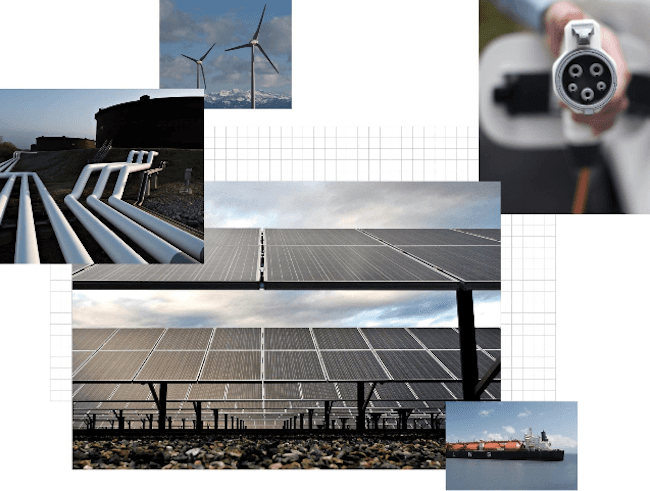
Bloomberg New Energy Finance has just published its 2017 New Energy Outlook, and the future looks rosy for renewables. That's welcome news considering the gloomy scenarios painted by some energy observers after President Trump announced that the U.S. would withdraw from the Paris Agreement on climate change.
In fact, the news is so good that it's a little hard to believe -- and sure enough, there is some bad news in the new report. But first, let's get to the good stuff.
A rosy future for renewables, with or without White House leadership
Before we get to the Bloomberg report, let's note that after President Trump announced that the U.S. will withdraw from the Paris Agreement, the U.S. business community swiftly stepped up to fill the climate change leadership vacuum along with mayors, governors, environmental organizations and many others.
That level of objection to Trump Administration policy should not be a surprise, considering that the U.S. is (still) a democracy, and the current occupant of the White House lost the popular vote by a significant margin.
In other words, the Trump withdrawal did nothing to hold back American leadership on the granular end of the scale. If anything, the president has handed the U.S. business community a golden opportunity to promote the strength of the corporate social responsibility movement along with capitalism, innovation, and other conventional aspects of the U.S. economic sector.
Now, let's turn to that report.
Coal-killing solar power strikes a chord...
The full New Energy report is available from Bloomberg, but for those of you on the go, a Bloomberg article about the report summarizes the whole thing in the headline:Solar Power Will Kill Coal Sooner Than You Think
That pretty much says it all. The coal industry has been pinning its hopes on the rapidly growing energy markets of China, India and the rest of Asia, but it looks like that door has slammed shut.
According to the report, the cost of solar will compete with new coal power plants in those countries by 2021 -- and solar is already competitive with coal in the important German and U.S. markets.
The effect on global fossil fuel emissions is expected to be significant:
The scenario suggests green energy is taking root more quickly than most experts anticipate. It would mean that global carbon dioxide pollution from fossil fuels may decline after 2026, a contrast with the International Energy Agency’s central forecast, which sees emissions rising steadily for decades to come.
...offshore wind and energy storage chime in, too
The report notes that offshore wind has been the most expensive option among "mainstream" renewables, but that is rapidly changing:
The cost of offshore wind farms, until recently the most expensive mainstream renewable technology, will slide 71 percent, making turbines based at sea another competitive form of generation.
The explosive growth of investment in energy storage is also expected to promote an earlier-than-expected decline in fossil fuel emissions.
Energy storage provides more opportunities to introduce solar and wind on a distributed generation basis in addition to utility scale operations.
Investment in mobile energy storage -- aka electric vehicle batteries -- is also part of the rapid fossil emissions reduction scenario.
Bloomberg does not particularly highlight the emergence of renewable hydrogen as an energy storage option for both mobile and stationary uses, but that could also become a factor if R&D continues apace.
Natural gas strikes a sour note...
Like many other energy policy analysts, Bloomberg includes natural gas in its stable of emission-reducing factors.
That's somewhat problematic considering the mounting evidence that fugitive methane emissions occur all along the natural gas supply chain. Gas storage facilities and air quality and water quality impacts related to drilling operations are a particular cause for concern, as are earthquakes and other unforeseen consequences of the shale gas boom.
...but it can't rain on the renewable energy parade
On the other hand, Bloomberg notes that renewables own the spotlight in the energy story of the future. Costs for wind and solar have fallen off a cliff in recent years, and Bloomberg sees more to come:
BNEF’s conclusions about renewables and their impact on fossil fuels are most dramatic. Electricity from photovoltaic panels costs almost a quarter of what it did in 2009 and is likely to fall another 66 percent by 2040. Onshore wind, which has dropped 30 percent in price in the past eight years, will fall another 47 percent by the end of BNEF’s forecast horizon.
All this is bad news for President Trump, who made bringing back coal jobs a central theme of his campaign.
That promise was already known to be an empty one among energy analysts, and judging by the latest opinion polls it looks like the general public has also begun to realize that most if not all of the Trump campaign was smoke and mirrors.
Trump has doggedly pursued pro-coal rhetoric during his tenure in the White House, but his own Energy Secretary is a dedicated champion of renewables. The "mystery" grid study notwithstanding, Energy Department research dollars continue to flow into advanced clean energy technology.
Meanwhile, power companies have continued to announce new coal plant shut-downs.
Here's Bloomberg on the topic:
Capacity of coal will plunge even in the U.S., where President Donald Trump is seeking to stimulate fossil fuels. BNEF expects the nation’s coal-power capacity in 2040 will be about half of what it is now after older plants come offline and are replaced by cheaper and less-polluting sources such as gas and renewables.
Now that the president is officially under investigation for obstruction of justice, he will probably have less time than ever to dedicate to reviving the coal industry.
That's bad news for coal miners, but it's a good opportunity for the private sector to roll up its sleeves and find ways to bring new jobs to communities that are left holding the short end of the stick.
How you can help
Now that the New Energy Outlook's good news about renewables is out of the way, here's the bad news in terms of climate change:
Although the world’s power sector emissions reach a peak within a decade, the rate of decline in emissions is not nearly enough for the climate. A further $5.3 trillion investment in 3.9TW of zero - carbon capacity will be needed place the power sector on a 2°C trajectory.
If you are a business owner or manager and you want to help nudge the rate of investment along for renewables, you can participate in a new global corporate survey launched by the International Renewable Energy Agency.
The survey includes any company of any size that uses energy. It's designed to help promote more efficient national policies for clean energy investment, and to showcase best practices and models for success.
Image (screenshot): via Bloomberg New Energy Finance.

Tina writes frequently for TriplePundit and other websites, with a focus on military, government and corporate sustainability, clean tech research and emerging energy technologies. She is a former Deputy Director of Public Affairs of the New York City Department of Environmental Protection, and author of books and articles on recycling and other conservation themes.














